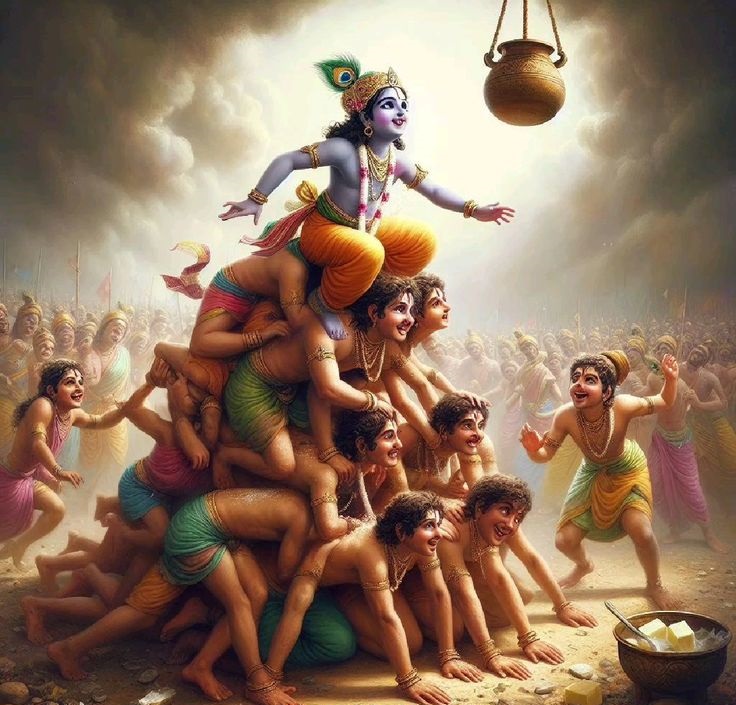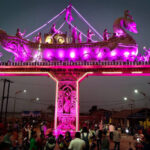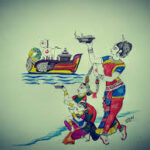
Janmashtami Puja: Celebrating the Birth of Lord Krishna
- utsavhub.com
- 4 October 2024
- By Religion, Festival Details, Hinduism
- 0 Comments
Janmashtami, also known as Krishna Janmashtami puja in odisha, marks the birth of Lord Krishna, the eighth avatar of Lord Vishnu. Celebrated with great devotion and joy across India, particularly in Mathura and Vrindavan, it falls on the eighth day (Ashtami) of the Krishna Paksha in the month of Bhadrapada (August-September).
Spiritual Significance:
The festival commemorates the divine appearance of Lord Krishna on Earth to eliminate evil, restore dharma, and spread love and wisdom. Krishna is considered the epitome of love, compassion, and playfulness, and his teachings in the Bhagavad Gita continue to inspire millions globally.
Key Rituals of Janmashtami Puja:
- Fasting (Upavasa): Many devotees observe a fast until midnight, the time when Krishna is believed to have been born. Some fast entirely, while others consume only fruits and milk, which were Krishna’s favorite foods.
- Jhulan Seva (Swing Ceremony): A special swing is decorated and placed in homes or temples, symbolizing the cradle of baby Krishna. Devotees rock the cradle, sing bhajans (devotional songs), and offer prayers.
- Abhishekam (Holy Bath): At midnight, a small idol of baby Krishna is bathed with milk, ghee, honey, curd, and water, followed by dressing the idol in new clothes and adorning it with flowers and jewelry.
- Offering Prasad: Devotees prepare a variety of sweets and offerings, including Makhan (butter), which is Krishna’s favorite, as well as fruits, nuts, and sweets like Panchaamrit (a mixture of five holy ingredients). These are offered to Krishna and then distributed as prasad.
- Midnight Aarti and Bhajans: The most significant moment of Janmashtami puja is at midnight, symbolizing the birth of Krishna. Temples and homes resonate with the singing of bhajans and chanting of “Om Namo Bhagavate Vasudevaya,” followed by aarti (devotional lamp lighting).
- Rasa Lila Performances: In some regions, dramatic re-enactments of Krishna’s early life, known as Rasa Lila or Krishna Leela, are performed. These highlight Krishna’s mischievous acts as a child, his love for Radha, and his role in protecting dharma.
Celebration Styles Across India:
- In Mathura and Vrindavan, where Lord Krishna was born and spent his childhood, grand processions, cultural performances, and temple ceremonies bring the towns to life.
- In Maharashtra, the Dahi Handi festival is a major part of the celebration. It involves teams of people forming human pyramids to break a pot filled with curd, symbolizing Krishna’s love for butter and his playful nature.
- In Gujarat, devotees observe the day with devotional singing, dancing the Garba, and religious rituals, while in South India, people prepare special sweet dishes and decorate homes with rangoli.
Importance of Janmashtami Puja:
The puja holds immense spiritual significance as it emphasizes the victory of good over evil, love over hatred, and knowledge over ignorance. It encourages people to live a righteous life and follow Krishna’s teachings of Karma Yoga—the path of selfless action.
Janmashtami is not just a celebration of Krishna’s birth; it’s a reminder of his enduring legacy as a protector of dharma, a divine friend, and a guide for humanity.

